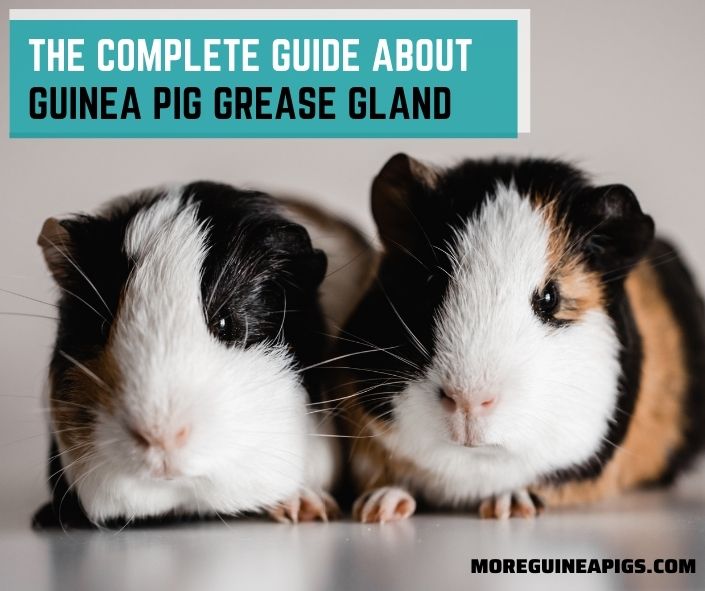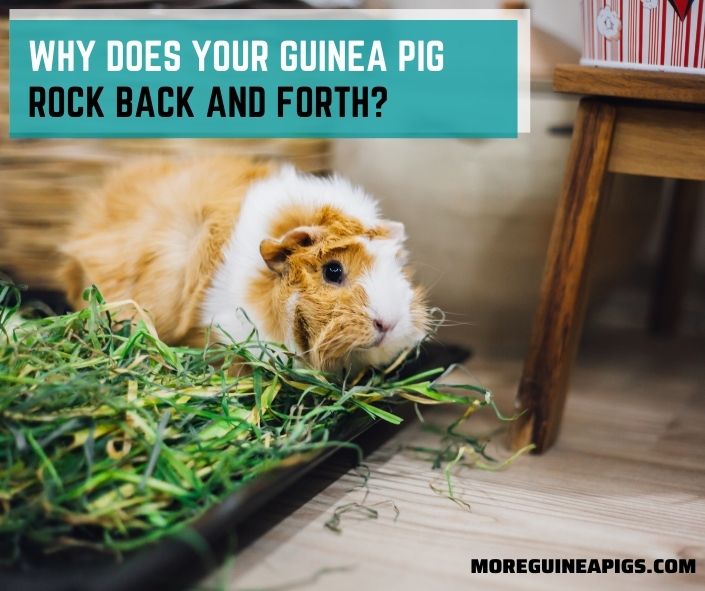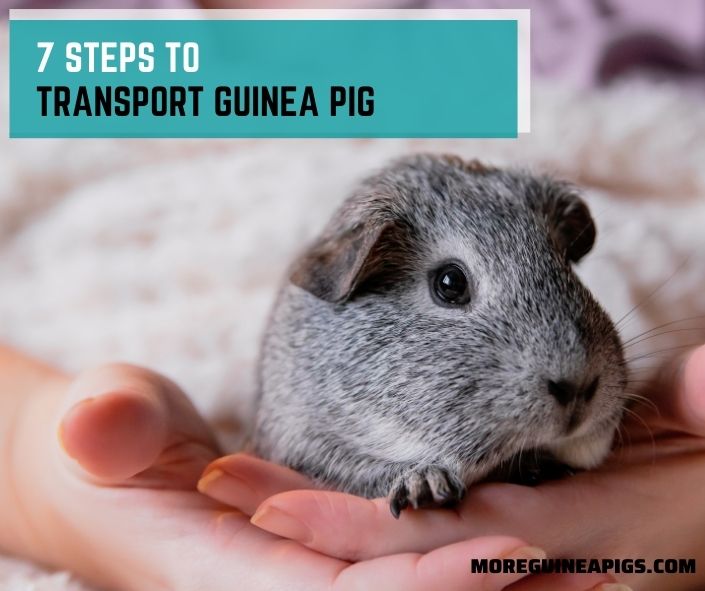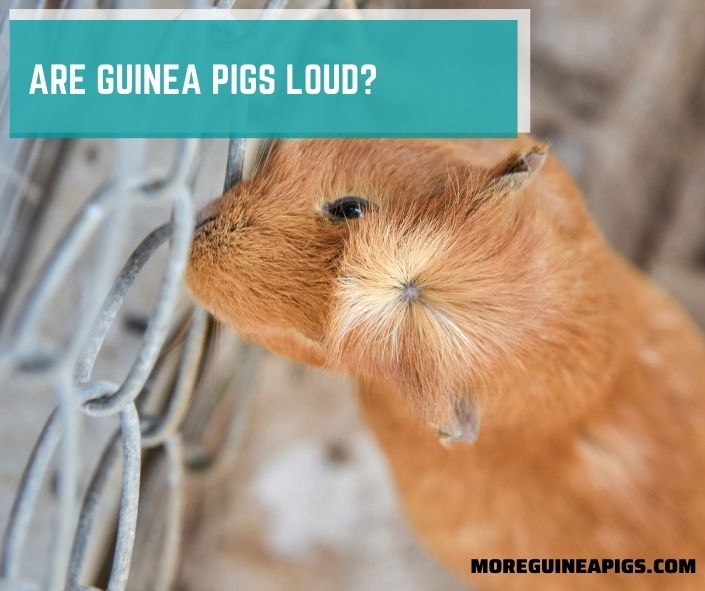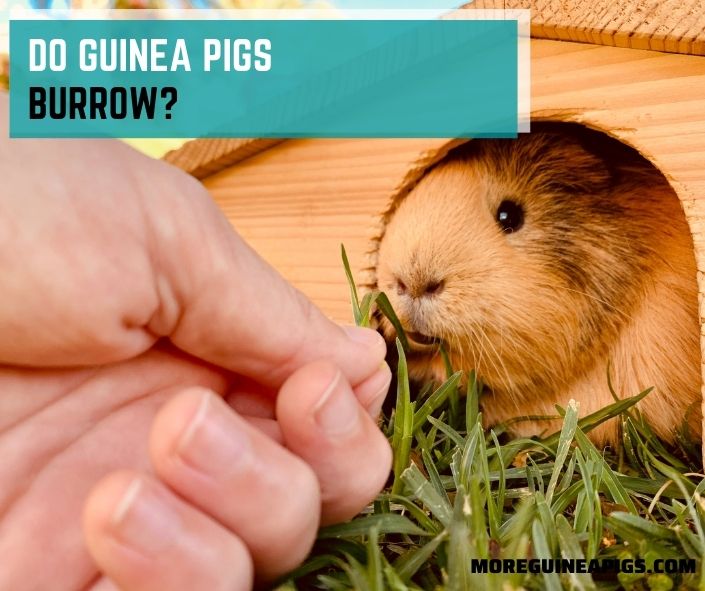The Complete Guide about Guinea Pig Grease Gland
Even after spending an abundance of time with our beloved guinea pigs every day, it’s possible not to notice their grease gland, especially for new beginners who know nothing about it.
It’s always good to examine your little cavy to understand its physical appearance or condition. Some important parts lie beneath guinea pigs’ fur, including the grease gland, and it’s imperative you know its location.
You also need to be informed about the functions of this essential body part and how to maintain it clean and free from infections. Don’t worry if you’re yet to see your little friend’s grease gland; I’m going to show you where to find it.
This article covers the complete guide about guinea pig grease gland. Read through to see why the grease gland is a must-have for guinea pigs.
What Should a Guinea Pig Grease Gland Look Like?
Owning a guinea pig can be full of learning experiences since they portray some features that are absent in many animals. Among the distinctive and crucial parts of guinea pigs is the grease gland.
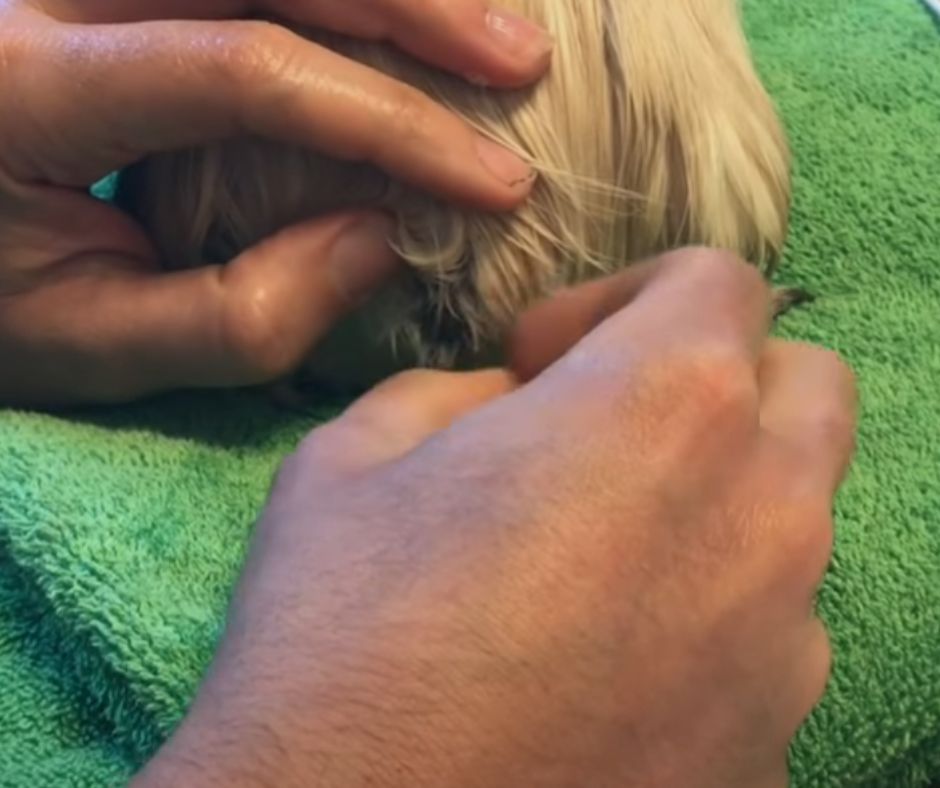
As its name suggests, a grease gland (caudal gland) is responsible for producing grease (an oily substance that is a little disgusting but totally normal). The oil becomes solid when it’s in contact with surfaces.
Guinea pigs depend on this oily/greasy substance for marking and scenting purposes. The gland appears as a gunky spot located at the end of the guinea pig spine.
It’s typically the area where the tail would be if these little rodents had protruding tails. The grease gland is present in male and female guinea pigs, and it becomes clearly visible after puberty.
Moreover, the grease gland in males is more active than in females. Therefore, the males require the most attention caring for their grease glands. Ideally, the gland is located about half an inch away from the genitals.
Do Guinea Pig Grease Glands Smell Bad?
Yes, the guinea pig’s grease gland can smell bad in some situations. One thing we know is that guinea pigs produce the grease for a specific purpose, and it’s natural to them.
However, active grease glands may start to smell bad with time, especially when it’s mucky. The grease can build up around the gland area and eventually be the culprit of the awful smell emitted by your piggy.
Sometimes you may not notice that your little friend’s fur is entangled, and it may also be difficult to spot the surfaces where the pig rubbed its scent gland.
But all the contaminated surfaces will definitely begin to smell over time, including the greased fur. The grease gland produces a musky smell that is pretty easy to identify, but only if you know it.
When you notice the musky smell on your pig or its house, it’s the best time to give the grease gland a thorough cleaning to keep it clean.
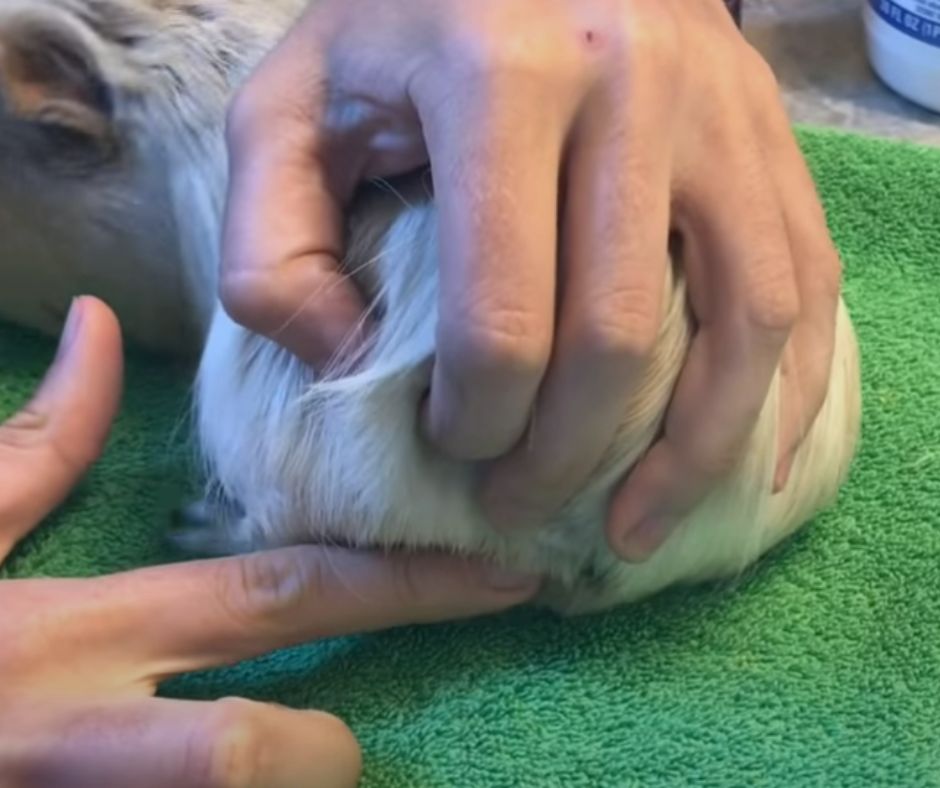
What Is a Guinea Pig’s Grease Gland Used For?
The Guinea pig grease gland is not inactive, but it has significant roles in these rodents. Guinea pigs primarily use the oil substance from the grease gland to mark territory.
The males are more territorial and produce a lot of greases. But the dominant sows also tend to secrete an abundance of this substance.
Adult cavies generally rub their grease glands against the sides of the cage, a water bowl, the shelter inside the cage, and random toys to mark them as their territory.
The grease stuck on surfaces is noticeable, but it’s not evident in some cases but turns out to be smelly after some time.
Grease gland secretion also plays a significant role in mating behavior, where males attract females. The grease emits a scent that’s superb for sexually attracting females.
Also read: Guinea Pigs Mating: 4 Important Things to Note
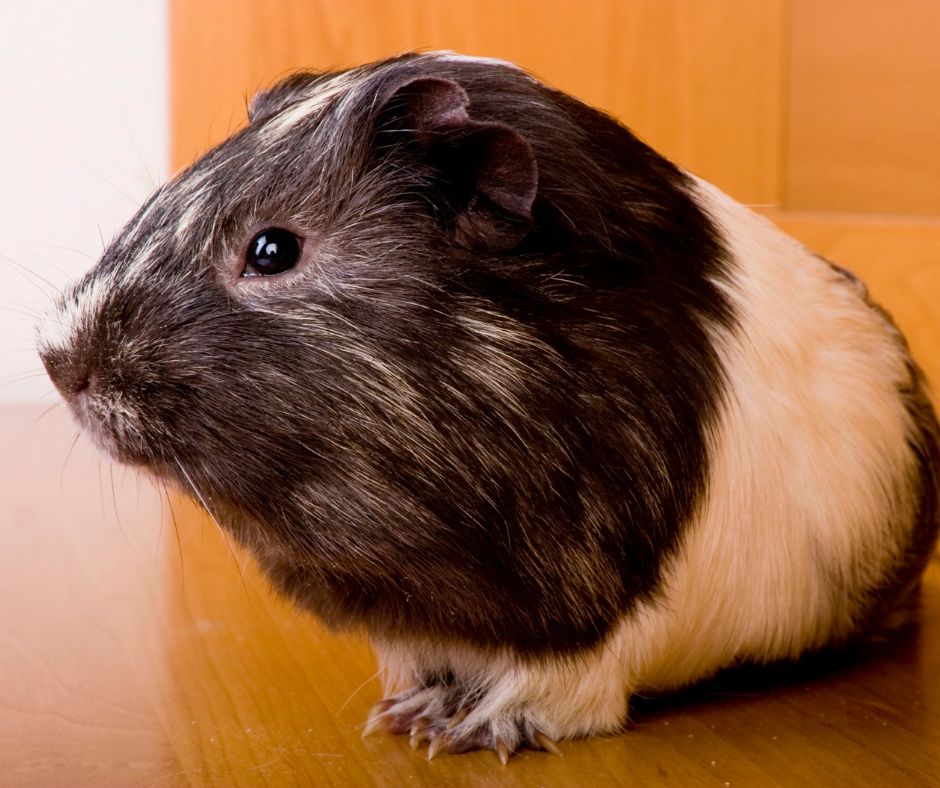
Why Grease Gland Needs Cleaning?
If you fail to clean your guinea pig’s grease gland, the wax/grease from old secretions build up around the gland area and block it. Blocking happens because the secrete is thick and dries, forming solid stuff on the fur.
If your piggy has matted hair or debris stuck to its rump area, it’s another way of telling you that the grease gland is dirty.
The awful smell from the uncleaned grease gland and foreign materials sticking on the fur makes the pig uncomfortable. The pig will often scratch the area or perhaps avoid food and physical activity.
Furthermore, a blocked grease gland becomes vulnerable to infection. An infected grease gland is something you wouldn’t want to witness in your little friend because it’s exasperating.
An infected grease gland appears red, swollen and has sores. Sometimes growth manifests in the area which doesn’t fall even after trying to clean it gently.
If your beloved pet has an infected gland, be sure to see your vet immediately. To shun obnoxious smells and infections, you should regularly clean the guinea pig grease gland.
How Do You Clean a Guinea Pig Grease Gland?
All you want is to raise a healthy and happy guinea pig. Cleaning the grease gland makes these pigs healthy and at ease.
The process of cleaning the grease gland is uncomplicated, and in a short time, you’re done with it. Some piggies screech and squirm when attempting to clean their gland, but others are calm.
So, don’t worry if you can’t restrain your little friend from cleaning; it’s allowed to have a helper with you who will assist you through the process. Don’t panic but be calm and confident.
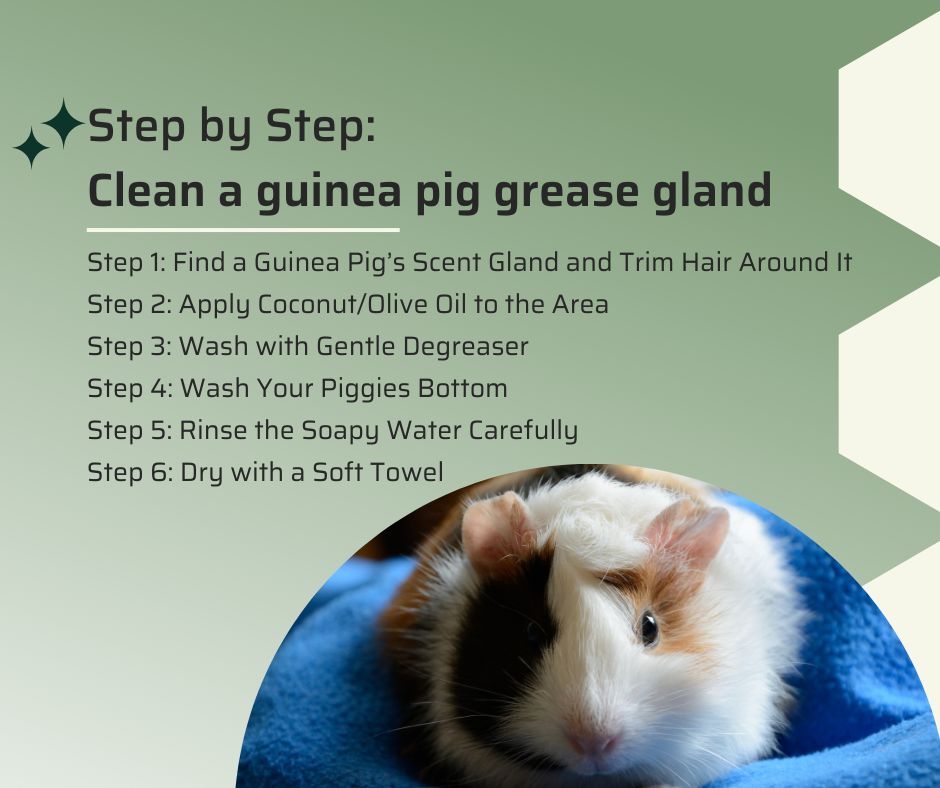
Below is a systematic procedure to follow when cleaning the grease gland from your furry friend.
Step 1: Find a Guinea Pig’s Scent Gland and Trim Hair Around It
You can’t work on something you don’t know where it’s located. To find the grease gland on your pig, trace your fingers down the spine or backbone to its rear end.
Around that point, you will notice a spot that feels a little sticky, and there is the grease gland. After you pinpoint the gland, you will want to trim the hair around it, especially when dealing with long-haired piggies.
Skinny guinea pigs don’t necessarily require trimming, but it’s essential for the piggies with hair. Trimming this area needs to be a regular grooming routine for the well being of your pig.
It helps ward off debris from sticking into the pig’s hair. Likewise, trimming makes it easy to wash the grease gland without pulling hair and prevents the area from becoming stinky. Make use of grooming scissors when trimming your pig.
Step 2: Apply Coconut/Olive Oil to the Area
Olive oil and organic coconut oil are excellent degreasers and effective in cleaning. However, you can use regular coconut oil in a pinch if that’s what is available.
Make sure that your pig is non allergic to coconut oil before you start using it. Some pigs don’t withstand this reagent. Ideally, test any oil product before using it.
Apply the oil around the grease gland and gently rub it, then give it around 3-5 minutes to loosen the buildup. The oil mainly lifts the grease away from the fur and loosens it.
Step 3: Wash with Gentle Degreaser
Here, you need an effective and gentle degreaser, e.g., dish soap, Cetaphil cleanser, Swarfega, and lukewarm water (about 1-2 inches in a shallow bowl). Prepare a water solution with a gentle degreaser (use only a few drops of the degreaser).
Guinea pigs don’t like too much water where they can submerge. They appreciate it when they can stand and keep their head above water.
You can choose to provide a towel at the bottom of the bowl where you bathe the pig to prevent it from slipping. Have your mixture ready and gently place the pig inside and ensure to support it with one hand.
Scoop the mixture over the hair and scrub it gently until you break all the debris and grease gland buildups.
Step 4: Wash Your Piggies Bottom
During the grease gland cleaning process, you can choose to wash your guinea pig bottom or not. If it pleases you to clean this area, wipe the pet’s belly, feet, and bottom using a damp washcloth and soapy water.
Use a guinea pig-safe shampoo or a mild and unscented detergent to make the soap solution. Using shampoo can help to wash away the oil you use in grease gland cleaning.
Step 5: Rinse the Soapy Water Carefully
Once all the grease buildup and debris are gone, you need to rinse the lather or soapy water away carefully.
Have a small dish ready with some warm water. The pig needs to be comfortable even when you rinse it.
It should be inside the dish standing on its hind legs while you securely hold its front legs to prevent it from jumping and fleeing. You can repeat rinsing until all the soap is gone.
Step 6: Dry with a Soft Towel
After successfully rinsing away all the soap or oil, remove the pet from water immediately and wrap it in a nice soft towel to keep warm. Exposing guinea pigs to cold when they’re wet can easily make them sick.
The pig needs to be completely dry before resuming its cage. Providing a treat as you pat dry your piggy will help hearten it.
Small Animals Bedding Mats Bathe Towels
How Often Do You Need to Wash Your Guinea Pig’s Grease Gland?
After how long to clean a guinea pig grease gland varies from one guinea pig to another. This variation is because some piggies have more active grease glands than others and therefore produce a lot of greases.
It makes sense to clean your guinea pig with a tremendously active grease gland once every week. But if the process is moderate, you can clean your little friend once every month.
Please don’t clean your guinea pig daily, even if you hate the smell of their grease gland secretion as a headache. Remember that this is a natural secretion and guinea pigs need it for important reasons.
In addition, cleaning the grease gland every day can harm the skin of your piggy and interfere with its ability to produce enough natural skin oils on its own.
How to Prevent Guinea Pig Grease Gland?
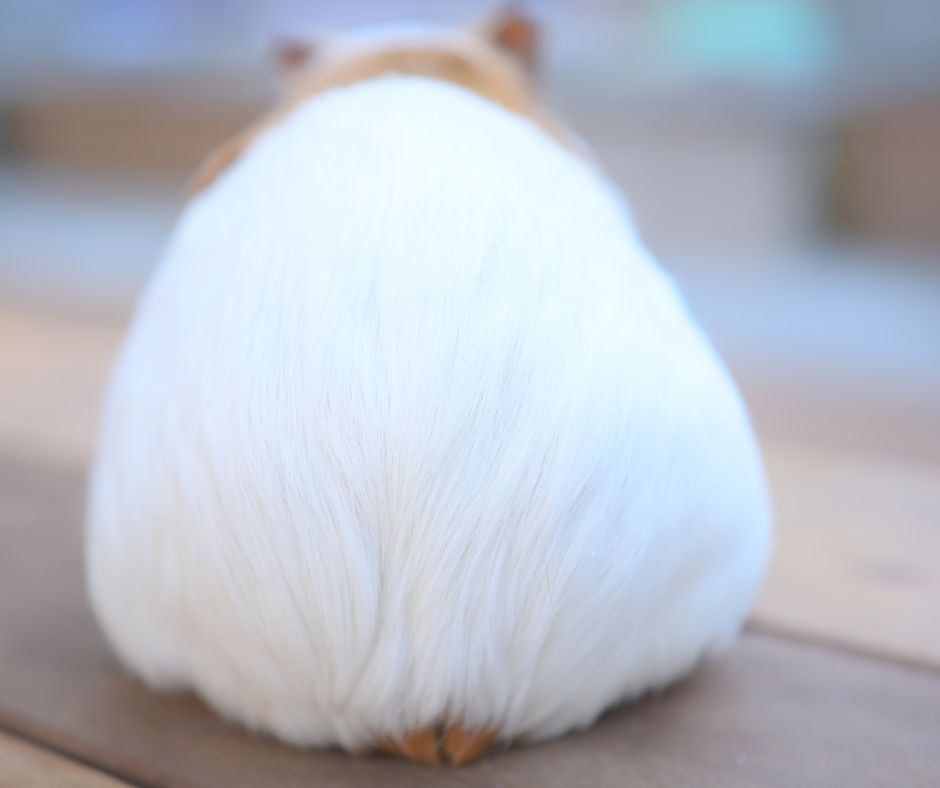
While the grease gland is natural to guinea pigs, most caretakers dislike its smell and would rather stay without it.
For this reason, many caretakers want to know if the grease gland is something they can prevent. Yes, it’s possible to avoid grease glands by neutering guinea pigs.
One of the impacts of neutering behavior is making guinea pigs calmer after growing up, making the grease gland inactive.
However, you shouldn’t castrate your guinea pig because you want to eliminate the grease gland. That gland you wish to do away with is prominent in guinea pigs, and they need it.
The ideal approach would be to keep an eye on the grease/oil buildup instead of letting your pig be neutered.
Check out: Neutering Guinea Pig: Everything You Should Know
Kaytee Quick & Clean Small Animal Shampoo Spray
Conclusion
The grease gland is valuable for guinea pigs. The prime role of the secretion from the grease gland is to help guinea pigs with marking territory, and it also serves as an attractant.
However, the grease gland can be stinky if not frequently cleaned. The wax or grease sticks on the guinea pig’s fur, dries, and mats the hair.
A matted fur causes skin irritation and aggravates tension in guinea pigs. So, to prevent such problems, you should check the grease gland regularly to ensure it’s in a safe condition.
Likewise, clean your pig grease gland anywhere from once every week or once every month if it has a very active grease gland; cleaning needs to be more frequent.
